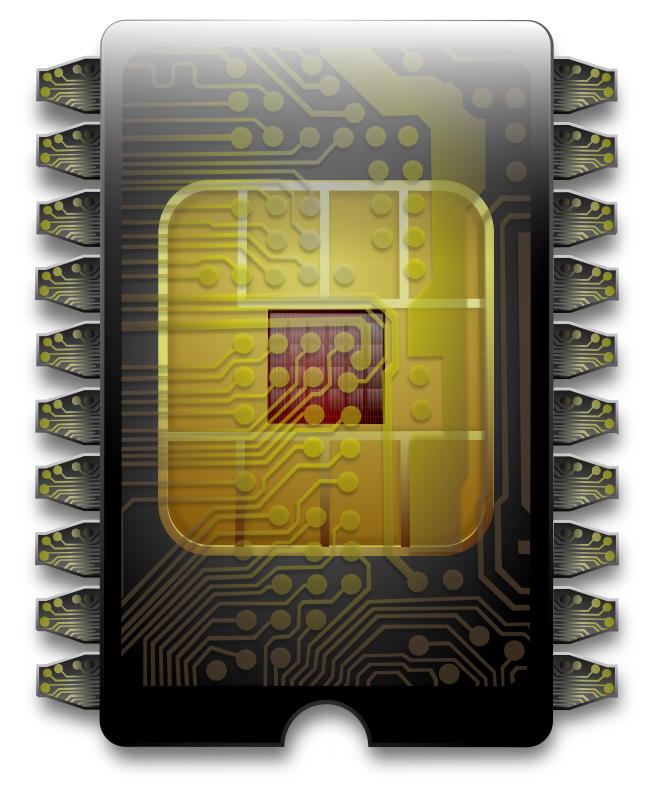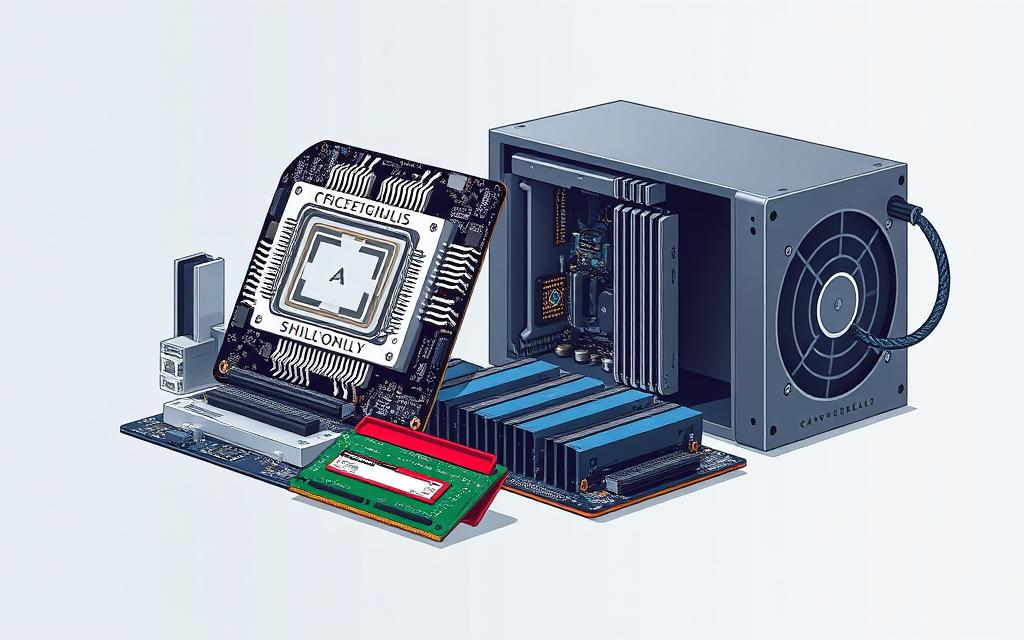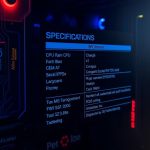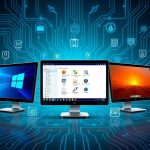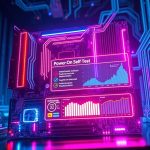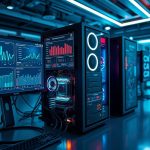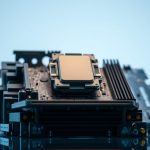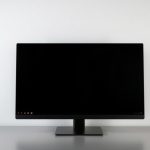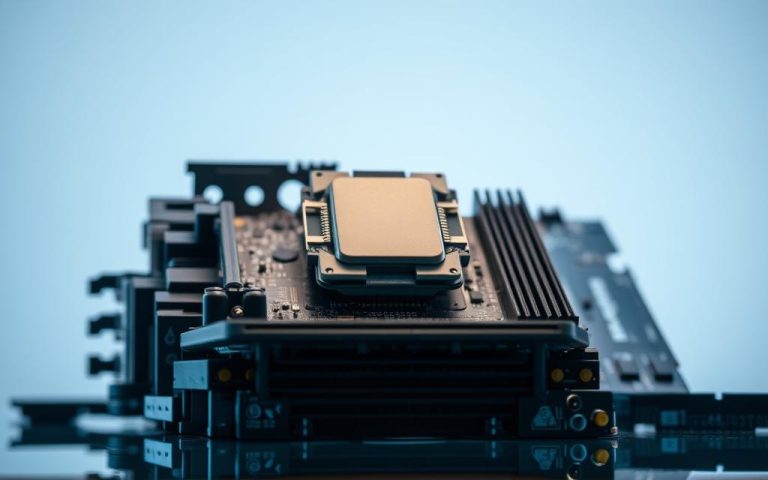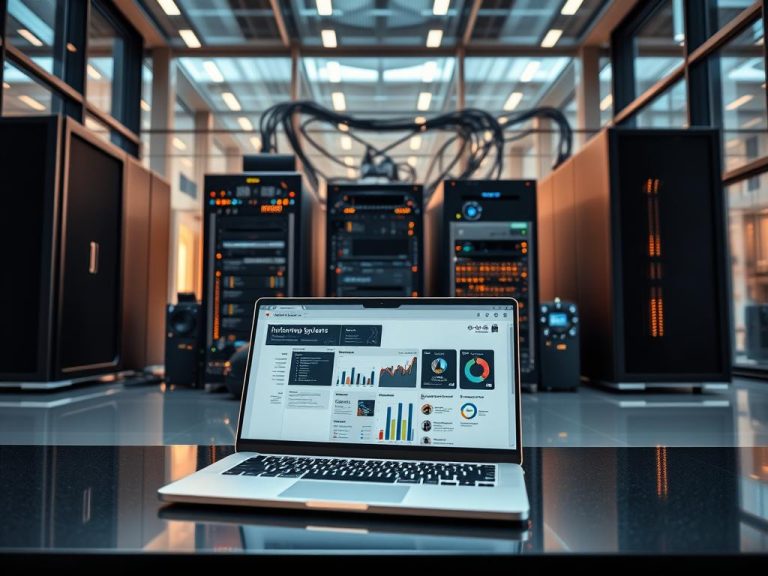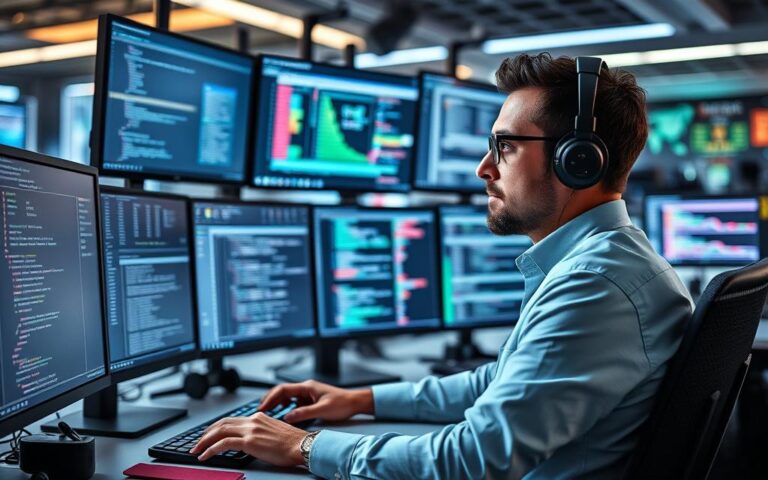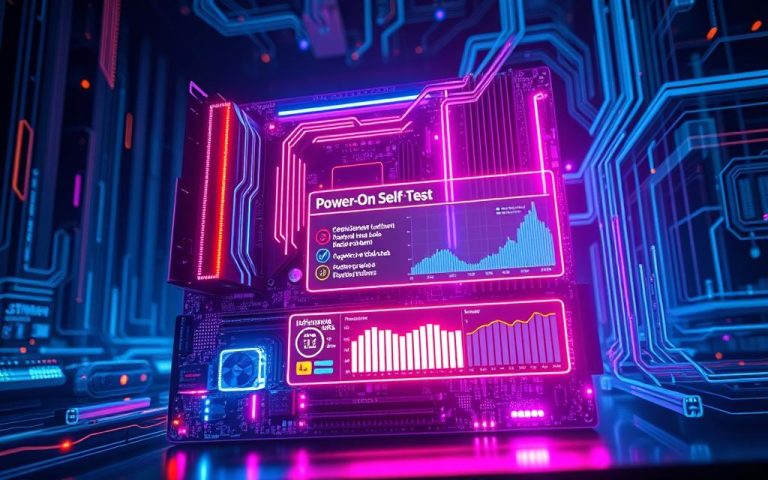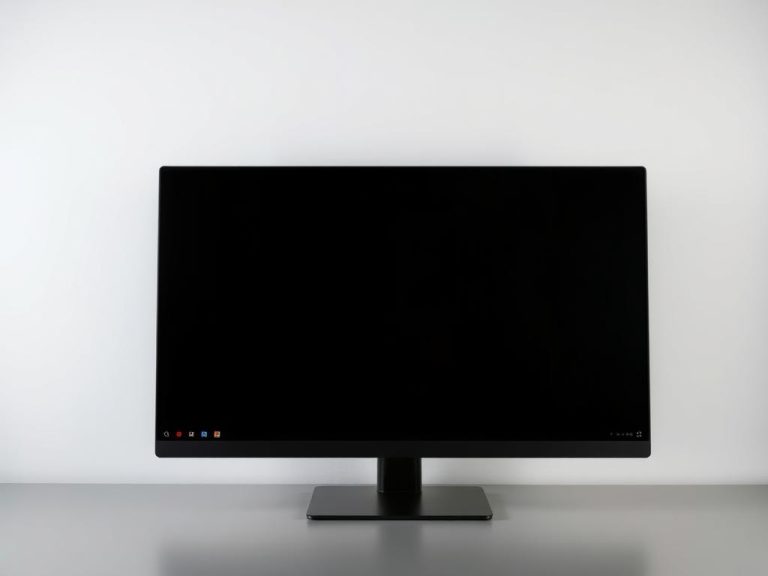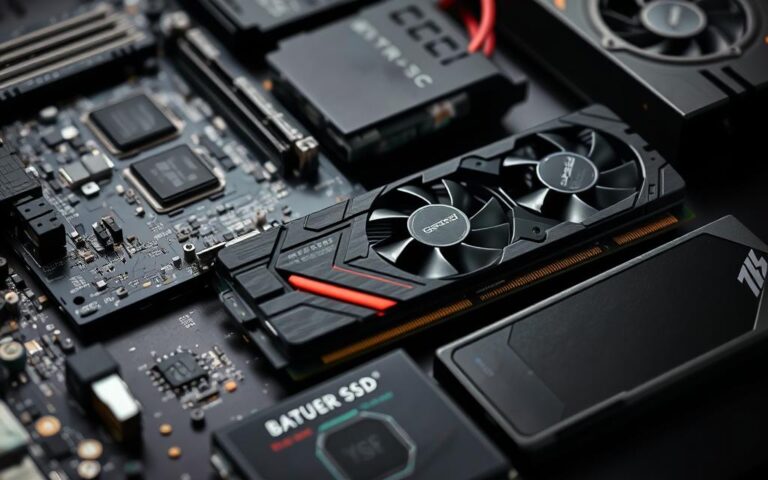Breaking Down the Four Key Components of a Computer System
Knowing the main parts of a computer system is key to making it work better. There are four main parts: input devices, processing devices, output devices, and memory. Each part is important for the computer to interact with users and to run software well.
The CPU is like the computer’s brain. It follows instructions and processes data. Today’s CPUs can do many tasks at once, thanks to having multiple cores. The RAM is another critical part. It’s where the computer works with data. The more RAM you have, the better your computer performs.
Output devices show us the data after it’s processed. This helps make using the computer a better experience. Understanding these parts helps both tech experts and regular users. It allows them to choose the best hardware and improve how they use computers.
Understanding Computer Hardware
Computer hardware includes the physical parts of a computer system. It is crucial for all the tasks a computer performs. Knowing about the main parts is important for everyone, not just IT experts. The success of any computing activity depends on the hardware components‘ quality and abilities.
Definition of Computer Hardware
The term definition of computer hardware covers all tangible elements that you can touch. This includes the motherboard, which connects everything; the central processing unit (CPU) – the system’s brain; memory like RAM, and storage options such as hard disk drives (HDDs) and solid-state drives (SSDs). Each part is crucial for software to work well, affecting our computing experience.
Importance of Hardware in Computing
The role of significance of hardware in computing is huge. Good hardware makes software run better. For example, high-end laptops with Intel® Core™ i7-12850HX processors handle many tasks easily because they have 16 cores. Also, SSDs retrieve data faster than HDDs, which boosts productivity. Knowing about hardware helps businesses make smart upgrades and care for their systems. A deep understanding of the hardware components leads to improved IT efficiency, enhancing work with various applications.
https://www.youtube.com/watch?v=4XwEsI_OYOM
| Hardware Component | Function | Typical Use |
|---|---|---|
| CPU | Processes instructions and controls data transfer | Core computing tasks |
| RAM | Stores currently used data for quick access | Running applications |
| Motherboard | Connects all hardware components | System integration |
| SSD | Provides fast storage access and read/write speeds | Operating systems and applications |
| HDD | Stores large volumes of data | Backup and archival storage |
Knowing about hardware parts and their roles helps with problem-solving and wise decisions for the best system performance. For detailed info, visit computer hardware.
Input Devices: The Gateway to Your Computer
Input devices play a key role in how we talk to our computers. They act as bridges, turning our orders into data the computer understands. Knowing about these devices makes using technology easier and more fluid.
Common Types of Input Devices
There are many different input devices, each with its own job. Here are a few common ones:
- Keyboard: This vital tool lets users type text and enter commands.
- Mouse: With a mouse, users can click and move things on their screen easily.
- Scanner: Scanners change paper documents into digital files for the computer.
- Microphone: This picks up sound, perfect for voice commands or recording.
Functions of Input Devices in User Interaction
Input devices are essential for smooth interaction with computers. They turn our actions into commands the computer gets. For example, pressing a key sends a signal the computer reads. The mouse lets us move around our screen easily.
Understanding these devices can make a big difference. With the right know-how, you can do tasks quickly and with less hassle.
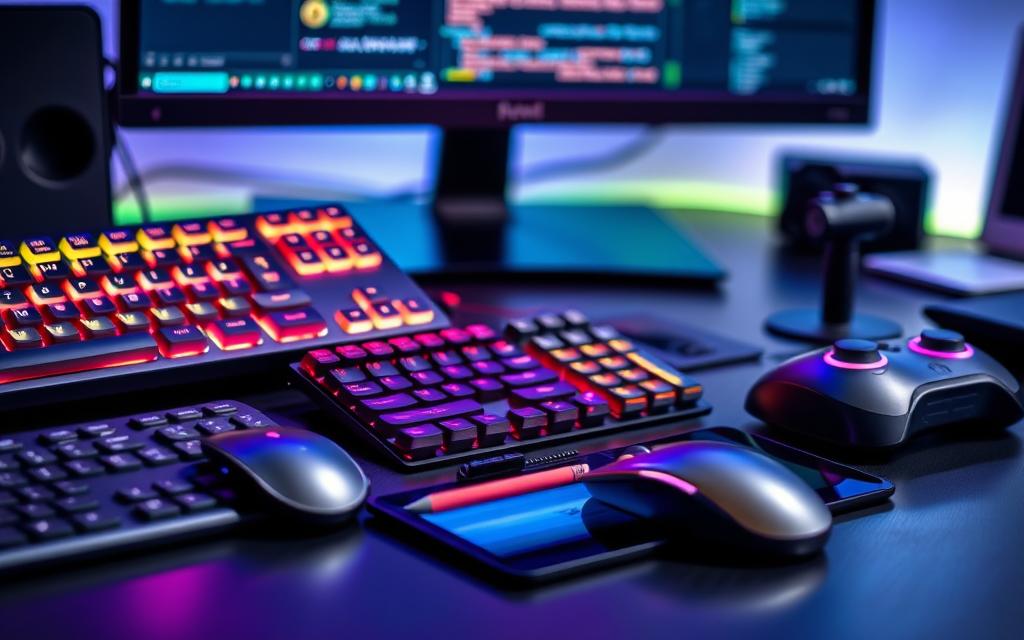
Output Devices: Interpreting the Data
Output devices act as a bridge, making it easy for users to understand computer data. They come in many types to meet different needs. This helps improve how we interact with technology.
Types of Output Devices
There are four main kinds of output devices: visual, print, audio, and data. For example:
- Monitors (visual)
- Printers (print)
- Speakers (audio)
- Projectors (visual)
- GPS (data)
- Plotters (print)
- Braille Embossers (print)
- Headphones (audio)
- 3D Printers (print)
- Haptic Devices (tactile)
Monitors are key for showing visual data. They vary in type, like LED or OLED. Printers offer different ways of printing, whether it’s with inkjet or laser technology.
The Role of Output Devices in User Experience
How well output devices work affects how easily we can use and understand computer information. Monitors and projectors are great for viewing details clearly. This makes our digital experience better.
Devices like speakers and headphones enhance how we interact by delivering sound. Wireless tech, like Bluetooth speakers, cuts down on cables. This adds to a rich multimedia experience.
| Output Device | Type | Function |
|---|---|---|
| Monitor | Visual | Displays images and information |
| Printer | Produces hard copies of documents | |
| Speaker | Audio | Provides sound output for media |
| Projector | Visual | Projects images onto large surfaces |
| GPS | Data | Provides location information |
| Plotter | Creates high-quality graphics |
Output devices greatly impact our digital interactions. They make it easier to understand and use the data from our devices.
Processing Devices: The Brain of the Operation
The central processing unit, or CPU, acts as the computer’s brain. It follows instructions and processes data. With its three key parts—the Arithmetic Logic Unit (ALU), Control Unit (CU), and memory registers—it carries out calculations and controls the computer’s operations. The CPU’s design, especially its clock speed, plays a vital role in how fast and effectively it performs tasks.
The Central Processing Unit (CPU)
The CPU’s performance is crucial in handling data. It turns simple binary data into useful information. Whether the registers are 16-bit, 32-bit, or 64-bit, the CPU efficiently manages data and instructions. The internal memory, also called main memory, is essential during program execution. It temporarily holds data for smooth operation. For more on these parts, check out computer components.
Understanding Data Processing and Execution
Data processing is a complex task performed by the CPU. It changes input into output smoothly. The system bus connects the CPU with the main memory and output devices like monitors and printers. This setup allows for quick data processing. It lets users run software and perform advanced tasks easily. Understanding how the CPU and other devices work is key to improving computer efficiency.
FAQ
What are the main components of a computer system?
The main parts of a computer system include input devices and the CPU for processing. It also has output devices and storage devices. These parts are crucial for the computer to work well and for users to interact with it.
Why is understanding computer hardware important?
Knowing about computer hardware is key because it affects how software performs. For IT pros and businesses, this knowledge can make computers run better. It helps in choosing the right hardware to boost efficiency.
What are some examples of common input devices?
Some common input devices are keyboards, mice, scanners, and microphones. They let users give data to the computer. This interaction is key for effective computer use.
How do input devices enhance user interaction?
Input devices let users talk to the computer in a way it understands. They turn user commands into data the computer can process. This makes using computers easier and boosts productivity.
What are the different types of output devices?
Output devices include monitors for visuals, printers for hard copies, and speakers for sound. Each plays a big part in giving processed info back to the user.
What impact do output devices have on user experience?
Output devices improve user experience by showing processed info in ways we can understand. They play a big role in how well users can use the information the computer gives out.
What is the role of the Central Processing Unit (CPU)?
The CPU is the computer’s “brain,” running commands from hardware and software. How fast and well the computer works depends on the CPU’s design and speed.
How does data processing occur in a computer system?
Data processing turns raw data into useful information through steps by the CPU. Input devices send data, the CPU processes it, and then output devices show the results. This cycle is vital for the computer’s operation.
